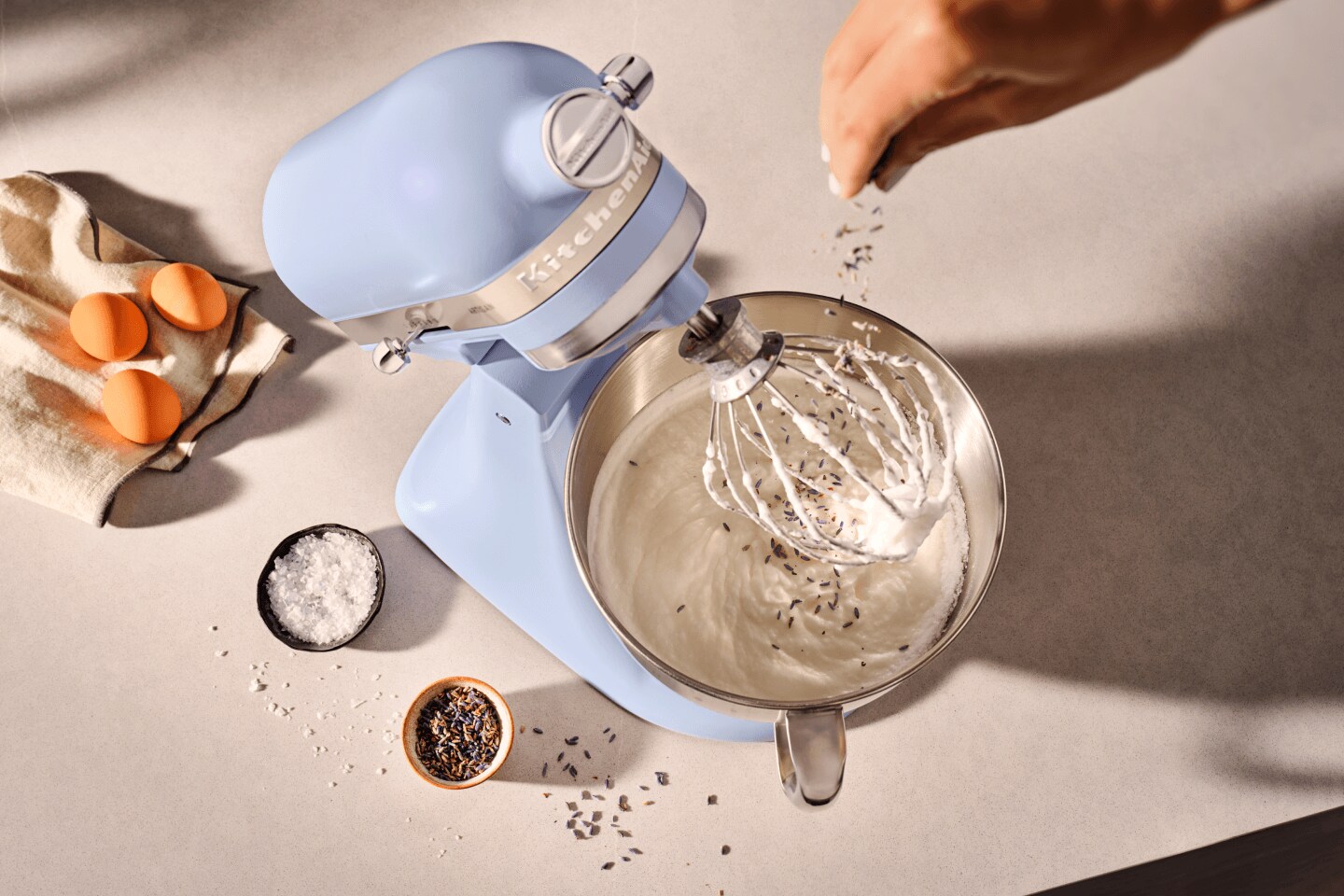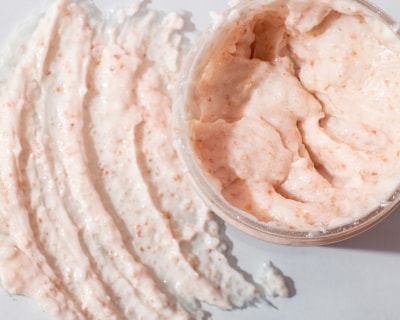
10 TYPES OF SALT AND HOW TO USE THEM
Salt is one of the most commonly used ingredients in your kitchen, and for good reason. Each type of salt, from flaky sea salt to finely ground table salt, can enhance the taste of ingredients and bring the flavors of a recipe together. Salt also serves as a versatile solution for various purposes, from cleaning to skincare. Understanding the differences between salt varieties can not only enhance your cooking but can also unlock the other uses for this mineral.
Use this guide to learn more about different types of salt and how to use them in and out of the kitchen.
WHAT IS SALT?
Throughout history, people worldwide have depended on salt for many purposes. This mineral can serve as a flavor enhancer, a preservative, a household cleaner and even a beauty product.


DIFFERENT TYPES OF SALT
There are several salt types, each with different uses. Explore some common and less well-known salt varieties below.

SEA SALT
Sea salt is harvested from evaporated seawater and retains several natural minerals during processing. This type of salt is available in coarse and fine textures, making it a versatile seasoning that can be used in a variety of recipes.
You can use fine sea salt for seasoning fresh salads or hearty roasted potatoes, while coarse sea salt is best used for salting meats or adding a finishing touch to pastries, truffles and even ice cream.

BLACK SALT
Black salt, also known as Kala Namak, is known for its dark color and sulfuric flavor. This type of salt is often used to enhance plant-based meals to provide a savory, meat-like taste to round out the flavor profile of vegan recipes, like tofu scrambles or vegan mayonnaise.
Black salt is also commonly used in spicy chutneys, yogurt-based sauces like raita and even as a unique pickling seasoning.

HIMALAYAN PINK SALT
Sourced from mines in the Himalayan mountains, Himalayan pink salt is often considered an elevated choice thanks to its enticing appearance and taste. The rosy hue and enhanced salty flavor of this salt variety make it the perfect finishing salt for salads, sauteed vegetables and juicy roasted meats.

BLUE SALT
Blue salt, sourced from ancient seas in Iran, is visually striking with its jewel-like blue hue attributed to mineral deposits. Known for its color and subtle, nuanced flavor, blue salt is a delicious finishing salt that adds a burst of flavor and color to any dish without overpowering the other flavors.
The distinct hue of this mineral inspired the minds in charge of selecting KitchenAid brand’s Color of the Year, Blue Salt. This shade of iridescent periwinkle has a subtle red finish that is sure to enhance the visual interest to your kitchen’s color scheme, just like the mineral’s subtle flavor enhances a recipe.
SALT COMPARISON CHART
Use the table below to discover different varieties of salt and when best to use them.
Type |
Best Used For |
|---|---|
| Kosher Salt | Seasoning meats and vegetables. |
| Table Salt | Baking, seasoning pasta. |
| Fleur De Sel | Sprinkling over a finished meal for added texture and flavor. |
| Sea Salt | Seasoning salads and potatoes or garnishing desserts. |
| Flake Salt | Koshering meat, sprinkling as a finishing touch to fried foods and desserts. |
| Himalayan Pink Salt | Finishing salt for salads, grilled meats and roasted vegetables. |
| Black Salt | Enhancing the flavor of spicy dishes and pickling vegetables. Gives vegan dishes a “meaty” flavor. |
| Persian Blue Salt | Seasoning vegetables and white meats or as a finishing salt. |
| Celtic Sea Salt | Seasoning meats and pickling. |
| Red Salt | Seasoning and preserving meats and fish. |


9 USES FOR SALT
Salt is an integral ingredient in the kitchen, but can also be helpful when cleaning or treating yourself to a little self-care. Discover different uses for various types of salt to turn this humble mineral into your go-to ingredient.
salt uses in the kitchen

1. SALTED BUTTER
Homemade butter can add an artisanal touch to any recipe. Make salted butter with flavorful salt varieties like fleur de sel, sea salt or Himalayan pink salt to transform butter from a simple ingredient into the star of the meal.

2. DRY CURED MEAT
Curing meat with salt is an ancient technique that increases the shelf life of your meat while transforming the flavors into something bold and intensely savory. To dry-cure meat at home, completely submerge a piece of meat in a container of non-iodized salt, herbs and whole spices. Place the container in the refrigerator for at least 24 hours, then remove from the salt, slice and enjoy.

3. SWEET AND SALTY BAKED GOODS
Though you may associate salt with savory dishes, this mineral can add a depth of flavor to your favorite baked goods. Transform traditional chocolate chip cookies into a sweet, salty dream when you make these sea salt miso chocolate chip cookies. Brighten the velvety richness of dark chocolate truffles by sprinkling flaky sea salt as a finishing touch, or enjoy a complex flavor profile of sweet, salty and subtle spice with these salted caramel ginger cookies.

5. SALT-CURED EGG YOLKS
Making salt-cured egg yolks is a delicious way to use up any yolks you have leftover from making meringue or homemade macarons. Gently place raw egg yolks in a container full of salt and sugar and completely coat the tops with the mixture. Seal them in an airtight container and chill for four days, then remove them from the container and dust off any remaining salt and sugar. Place them in a 150ºF oven for about one and a half hours to dry.
Once the curing process is complete, you can use the egg yolks like you would a hard cheese. Grate them over pasta, soup and salads for a unique and savory boost of flavor.

6. SEA SALT ICE CREAM
There’s truly nothing quite as delicious as home-churned ice cream, and this unique ice cream flavor is sure to stand out on a sundae bar. Simply add flaky sea salt to your homemade ice cream recipe, then top each cone or bowl with an extra pinch for an added crunch.
salt uses beyond the kitchen

7. SEA SALT BODY SCRUB
Instead of buying your favorite self-care staples, you can simply open your pantry. Finely ground sea salt can be used as an exfoliating ingredient in body scrubs, making it easy to create a spa-worthy experience at home. Mix fine sea salt, coconut or almond oil, honey and a few drops of your favorite skin-safe essential oil to create a luxurious DIY body scrub.

8. SEA SALT LIP SCRUB
Just like the body scrub, sea salt can be used to buff away dry or peeling skin on your lips. Simply mix fine sea salt with honey to create a homemade lip scrub in a pinch. Be sure to moisturize your lips afterward with a nourishing lip balm for best results.

9. HOUSEHOLD CLEANER
This pantry staple can also help you clean up messes all over your home. The abrasive nature of salt makes it an effective scouring agent, tackling stubborn grime and grease with ease. You can use a solution of salt and hot water as a stain remover on fabric for wine, coffee or oil spills, or clean your oven and stove with salt and vinegar. Get rid of water stains by making a paste of water and fine salt, or clean out your refrigerator with a damp mixture of salt and baking soda.
explore the KITCHENAID® COLOR OF THE YEAR: BLUE SALT
Just like the way a pinch of salt can open new depths of flavor, KitchenAid brand’s Color of the Year inspires versatility and an ever-shifting nature in your kitchen. The periwinkle blue and subtle reddish-pearl finish softly shifts hues depending on the lighting and is inspired by blue salt found in ancient Iranian seas.
LEARN MORE ABOUT YOUR FAVORITE INGREDIENTS WITH KITCHENAID BRAND
-
 41 Potato Recipes and Ideas Potatoes are delicious and versatile. Learn what dishes can be made from potatoes and get potato recipe ideas for breakfast, lunch, dinner and even dessert.
41 Potato Recipes and Ideas Potatoes are delicious and versatile. Learn what dishes can be made from potatoes and get potato recipe ideas for breakfast, lunch, dinner and even dessert. -
 23 Foods You Should Not Refrigerate Learn about different foods, fruits and veggies that should not be refrigerated, and get tips on how to properly store your food to keep it fresher longer.
23 Foods You Should Not Refrigerate Learn about different foods, fruits and veggies that should not be refrigerated, and get tips on how to properly store your food to keep it fresher longer. -
 20 Pumpkin Recipes and Ideas Learn what to make with pumpkin and get recipe ideas from soups to desserts. This collection of delicious pumpkin dishes is a great way to celebrate autumn.
20 Pumpkin Recipes and Ideas Learn what to make with pumpkin and get recipe ideas from soups to desserts. This collection of delicious pumpkin dishes is a great way to celebrate autumn.

